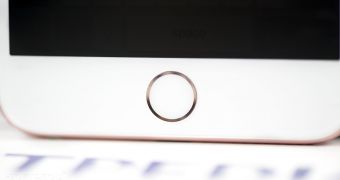If you believe that securing your phone with a fingerprint makes it impossible to hack, think again. Michigan police have recently asked the Michigan State University to produce a 3D replica of a dead man’s fingers in order to access his iPhone and collect data that is believed to contain evidence linked to an ongoing murder case.
Professor Anil Jain has been tasked with creating the 3D molds, and according to a report by Fusion, the project is advancing well so far, although in-lab testing is still being performed, and it’s not yet sure that the prints can unlock the iPhone.
With a long experience in facial recognition programs, fingerprint scanners, and tattoo matching, the Professor says that they are trying to build the 3D prints using the man’s fingerprints that already existed in the police database, as he was arrested in the past and his information was recorded. It’s not clear, however, why they aren’t using the fingers directly since they have the body.
Using the information provided by the police, the Professor has managed to build replicas of all 10 fingers because the investigators are not sure which finger the murdered man actually used to secure his phone.
“We don’t know which finger the suspect used. We think it’s going to be the thumb or index finger - that’s what most people use - but we have all ten,” the Professor is quoted as saying.
Work to complete in coming weeks
In order to simulate the pressing of an actual finger, the Professor turned to a thin layer of metallic particles, which replicates the human skin and makes the fingerprint scanner read the print just like it were a real finger. They believe everything should work correctly and unlock the phone, but for the moment, they’re just testing everything in labs to be sure that no issue whatsoever is experienced.
Work on the 3D replicas is expected to complete in the coming weeks, and if successful, it can open the door for a new way of unlocking phones without any implication from the company that manufactured said devices.
Earlier this year, Apple refused to help the FBI break into the iPhone used by one of the San Bernardino terrorists, claiming that this would set a dangerous precedent and would only create new risks for customers in the United States. The FBI eventually managed to unlock the phone with help from an undisclosed group of hackers, so Apple was no longer required to develop a backdoor to access data stored on it.
More recent updates made by Apple to iOS software, however, make it impossible even for fingerprint replicas to be used to unlock iPhones, as passwords are requested every 48 hours no matter what. So even if a 3D fingerprint is created, cracking the password would still be needed if the data isn’t extracted in due time.

 14 DAY TRIAL //
14 DAY TRIAL //